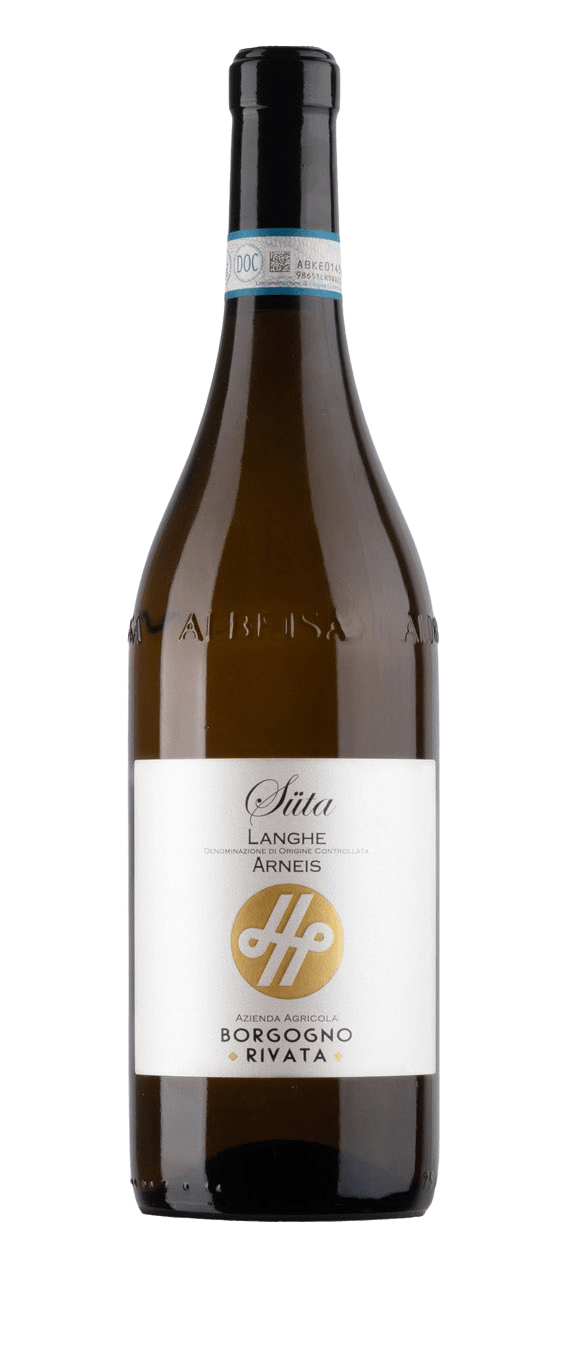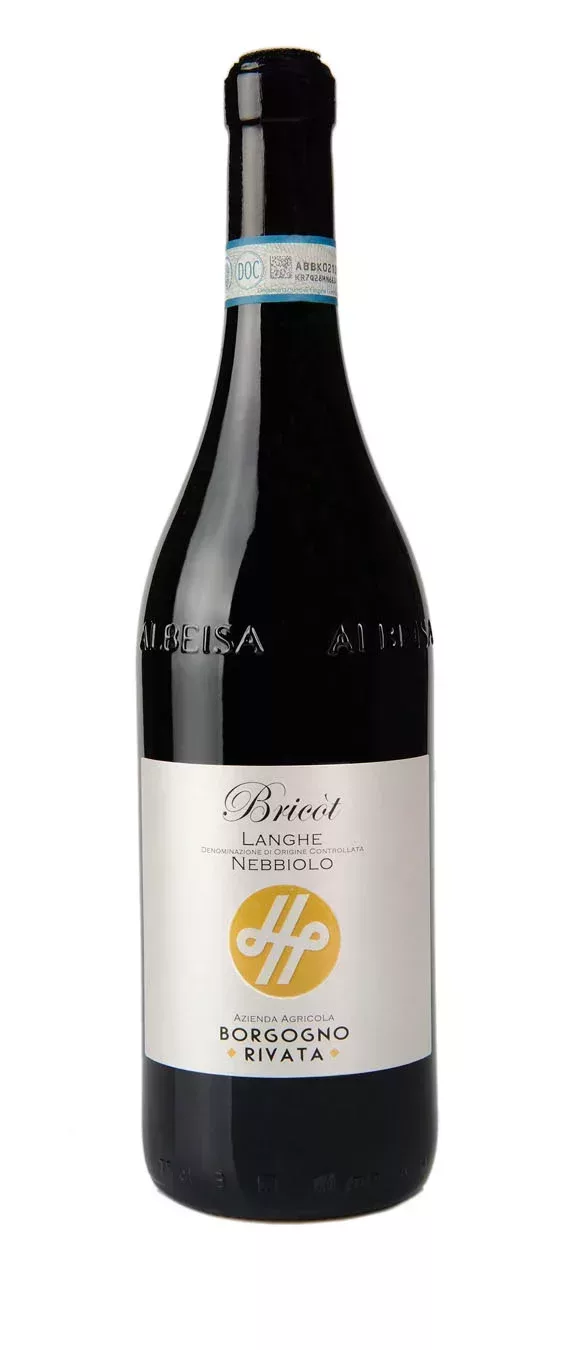Borgogno Rivata
Orario di apertura
Chiusura
Vacanze
Una cantina giovane, improntata sulla produzione di vini di qualità senza i paletti della tradizione secolare.
Sviluppo e innovazione convergono in bottiglia per dare vita a vini nuovi, con l’ausilio di terre storicamente vocate alla produzione enoica.
Pratica un’agricoltura a basso impatto ambientale mediante inerbimento e lotta integrata, in modo da evitare l’uso di diserbanti e anticrittogamici.

I giovani produttori si definiscono i La Morra Wine Boys, sulle orme dei rivoluzionari Barolo Boys

Una storia che
inizia nel 2010
in La Morra
Nel 2010 le aziende di Alberto e Massimo si uniscono.
In entrambe le famiglie c’è un forte legame con il vino, ma i due giovani credono nel bisogno di una chiave di lettura diversa.
Venuti a conoscenza del fenomeno francese degli anni ‘90, il cosiddetto “vino da garage” della zona di Bordeaux, arriva l’illuminazione: perché mettersi in competizione con i “Barolisti”?
Il loro sogno è una piccola produzione rappresentativa del territorio di Langhe e Roero, ma libera dai ferrei dettami della tradizione.
E’ così che prende vita la cantina Borgogno Rivata: un’azienda giovane e fresca, fondata su sperimentazione e sviluppo.
I Vini
La proprietà si estende per una quarantina di ettari.
Il grosso della terra è distribuita in località Sotteri di Guarene, a questa si aggiungono i vigneti di La Morra.
I terreni sono coltivati a vigneti (5 ettari), cereali, mais e frumento (30 ettari), frutteti di mele, pere, albicocche, pesche, prugne e nocciole (5 ettari), cui si aggiunge un ettaro dedicato all’orticoltura.
I vini qui prodotti sono Barolo, Nebbiolo, Dolcetto e Barbera per i rossi, insieme a Favorita e Arneis per i bianchi.
Vini prodotti
Langhe Nebbiolo DOC
Dolcetto d'Alba DOC
Barbera d'Alba DOC
Roero Arneis DOCG
Estensione vigne
N° di Bottiglie
Posizione delle vigne
Metodo Agricolo
Prodotti in vendita nel nostro negozio
Prodotti
Sidré, il sidro di Pere Madernassa del Roero.
E’ il fiore all’occhiello della produzione, ottenuto dalla frantumazione e pressatura delle pere Madernassa, varietà tipica del Roero, fermentate a 14° per 15/20 giorni.
La spumantizzazione è data dalla seconda fermentazione eseguita a 12°, cui segue la filtrazione e un periodo di riposo in vasca.
A questo punto sidro Sidré è pronto per essere imbottigliato: secco, frizzante e con basso grado alcolico (Vol. 8%) è adatto a ogni situazione: da tutto pasto ad aperitivo leggero.
Sidré

Il sidro di pere secco, fresco e beverino, perfetto per l’aperitivo.
Visite & Degustazioni
Il Pit Stop in 3 step: un’esperienza entusiasmante e piena di colpi di scena!
La visita proposta da Borgogno Rivata è diversa dal comune giro in cantina, ed è suddivisa in 3 momenti.
Fai il pieno di energia con la degustazione dei vini di produzione e del Sidré, partecipa al Gran Prix Borgogno Rivata e guida alla vittoria il vino che ti è piaciuto di più!
1. Qualifiche tra i vigneti
La visita inizia tra i filari delle vigne per imparare a conoscere gli stadi vegetativi, i lavori effettuati e quello che ancora c’è da fare per produrre un ottimo vino.
2. Ricognizione in cantina garagista
Arrivati in cantina ti aspetta un ambiente moderno, in stile industrial, con murales e graffiti sulle pareti.
Ti verranno mostrati i locali dedicati alla vinificazione, all’affinamento e allo stoccaggio dei vini.
3. Pit Stop: le bottiglie ai box
Giunti alla sala degustazione degusterai 4 vini, accompagnati da altri prodotti aziendali come la pera Madernassa cotta, le nocciole Piemonte e la frutta fresca di stagione.
Non mancheranno altre tipicità locali, tra cui salumi, affettati, formaggi, focaccia e grissini.
Sidré
L’inimitabile sidro ottenuto da pere Madernassa.
Roero Arneis DOCG
Ideale per aperitivi ed antipasti… ma non solo.
Pineti Barbera d’Alba DOC
Il vino che più rappresenta la famiglia Rivata.
Bricot Langhe Nebbiolo DOC
L’idea più giovane del nebbiolo.
Dopo aver completato tutte le tappe del Pit Stop, non ti resta che stabilire il tuo podio Borgogno Rivata!
Gruppi
Durata della visita
Prenotazione
Prezzo degustazione

La visita inizia tra i filari delle vigne per imparare a conoscere gli stadi vegetativi
in cantina ti aspetta un ambiente moderno, in stile industrial, con murales e graffiti sulle pareti
Dopo aver completato tutte le tappe del Pit Stop, non ti resta che stabilire il tuo podio Borgogno Rivata!
Prezzi & Servizi
Visite e degustazioni
Degustazione
4 vini → 30,00 € a persona
- Sidrè
- Roero Arneis DOCG
- Barbera d'Alba DOC Pineti
- Langhe Nebbiolo DOC Bricot
Orari di visita
- dalle 10:30 alle 12:30
- dalle 15:00 alle 17:00
Su richiesta vengono valutati anche altri giorni e orari.
Servizi
Pagamenti accettati

Pedalare per Castelli tra Castiglione e Serralunga
SP157, 19, 12060 Grinzane Cavour CN, Italia
Scopri ↝
Palazzo Salmatoris Cherasco
Palazzo Salmatoris, Via Vittorio Emanuele, Cherasco, CN, Italia
Scopri ↝


















